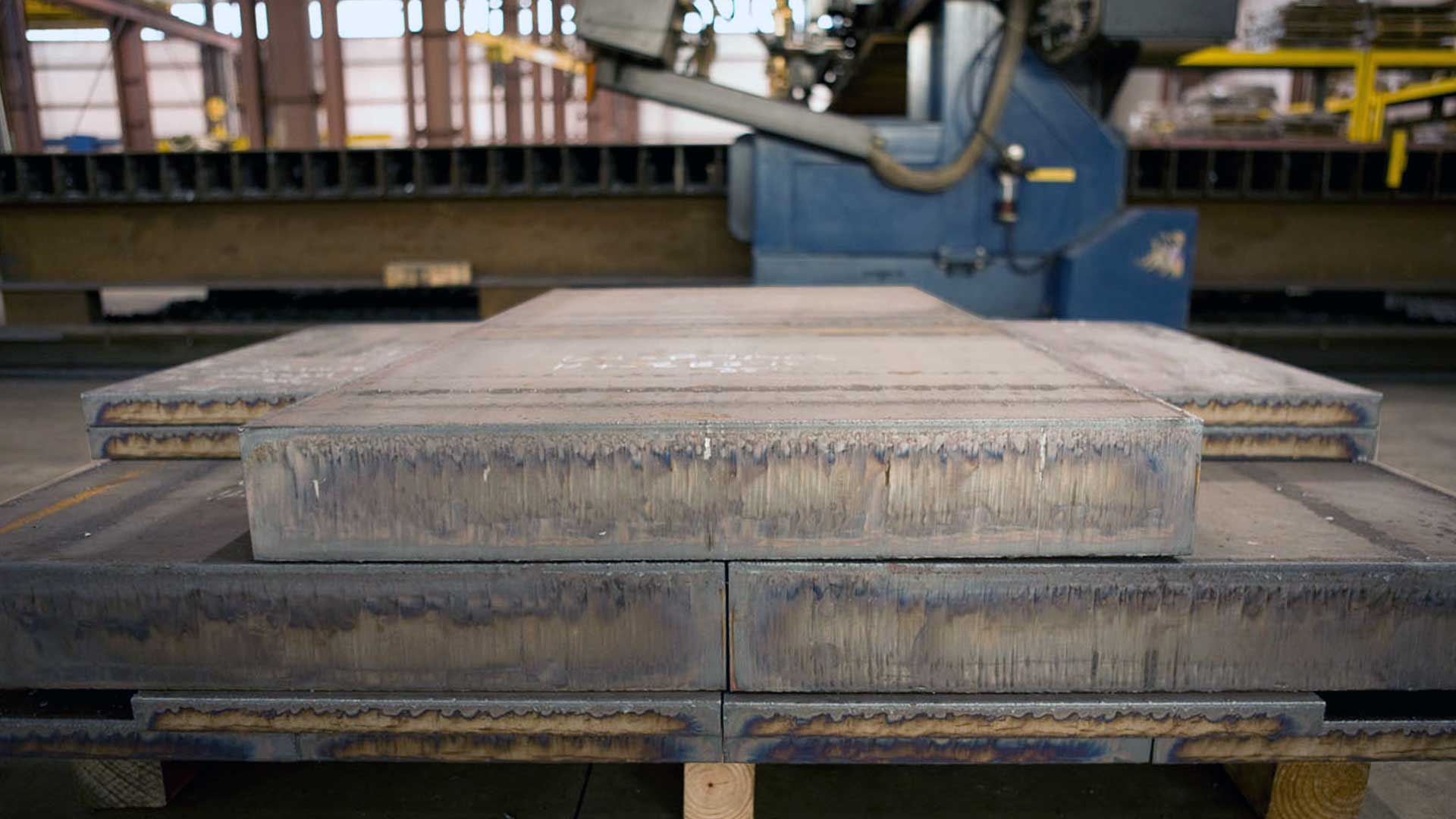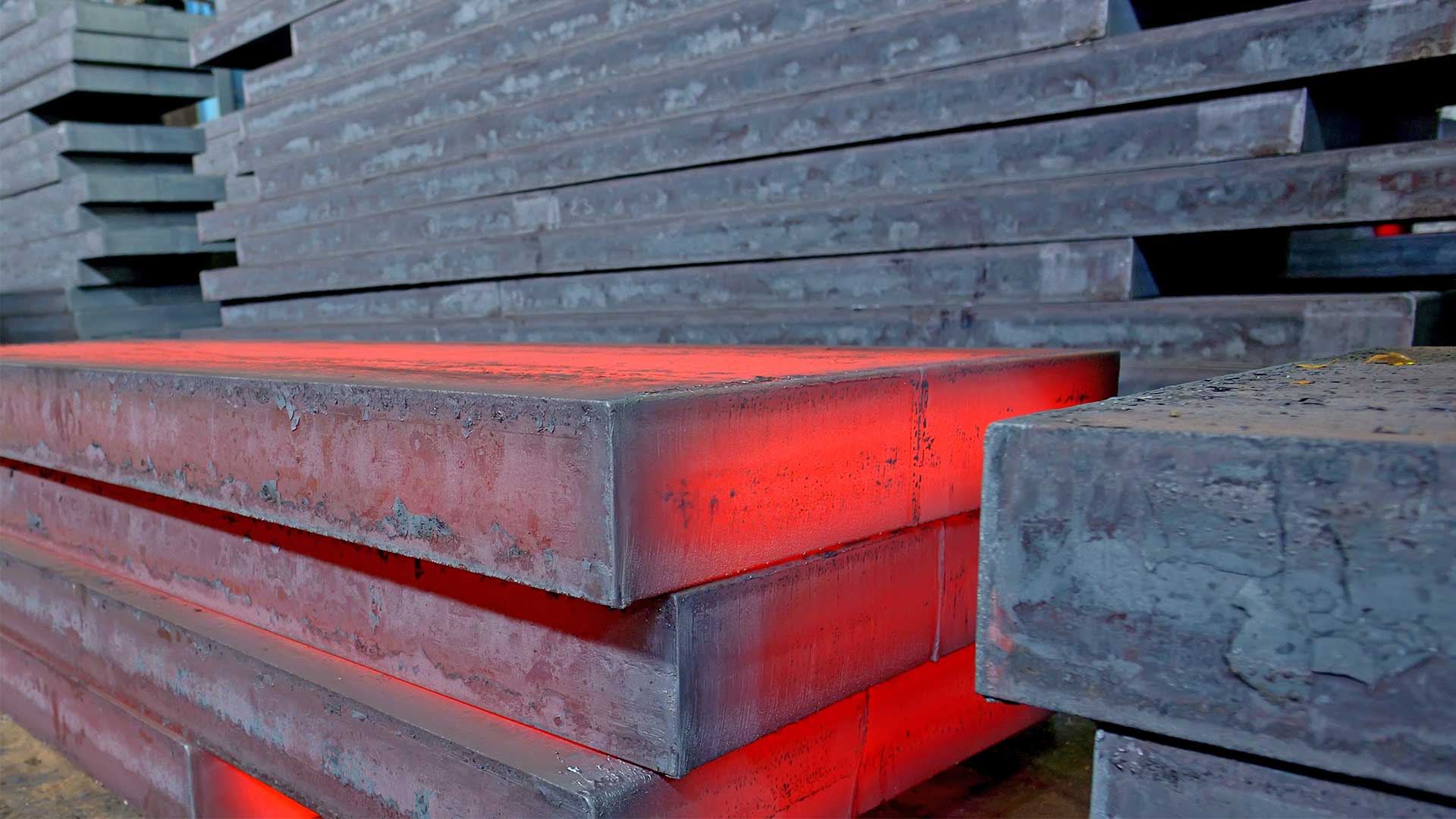We use cookies to analyze traffic and improve your experience. We may also share your information with our analytics partners to improve our website, as detailed in our Privacy Policy. You consent to our cookies if you continue to use this website.


In construction and fabrication, the grade and composition of the steel plate materials used make a huge impact on the final product. Abrasion resistant steel plate is a common steel plate that boasts a harder, tougher quality that lasts about four times longer than ordinary high-strength structural steel plate.
But what makes it tougher, and how do you know when your project requires abrasion resistant steel?
We get this question a lot, so here is the run-down on abrasion resistant steel plate, as well as the differences between hardness levels AR400, AR450, AR500 and beyond. You can also contact us today to get a quote for abrasion resistant plate.
Abrasion resistant (AR) steel plate is a high-carbon alloy steel plate. This means that AR is harder due to the addition of carbon, and formable and weather resistant due to added alloys.
Carbon added during the formation of the steel plate substantially increases toughness and hardness, but reduces strength. Therefore, AR plate is used in applications where abrasions and wear and tear are the main causes of failure, such as industrial manufacturing, mining, construction and material handling. AR plate is not ideal for structural construction uses like support beams in bridges or buildings.
Some common applications where AR steel is used to help resist material wear and tear include:
AR material is produced by quenching and tempering forged steel blocks, or ingots. During this process, the grain structure is changed to increase toughness and encourage formability (or, to be less brittle), and results in through-hardening of the material.
Quenching and tempering (Q&T) is a two-part process:
Quenching occurs when steel brought to a high temperature – usually between 1,500-1,650-degrees Fahrenheit – is rapidly cooled with water. This process causes crystal structures to form within the steel, increasing hardness.
Tempering is the process of re-heating quenched steel to a below-critical temperature (around 300-700-degrees Fahrenheit), and then allowing the plate to cool in normal air temperatures.
Reheating the material breaks down the crystal structures formed during the quenching process, while the long cooling allows the crystal structures to refrom – maintaining most of the strength and hardness, but adding to overall ductility.
Related: Exploring Steel Plate Heat Treatment Processes
Many times, abrasion resistant steel is labeled "AR400F" and "AR450F" (and sometimes "AR500F"). Today, AR material with or without the "F" are interchangeable, but – historically – material with an "F" simply meant that it was "formable" and could be bent to a certain degree without cracking.
When mills produced both formable and non-formable steel plate, formable was slightly more expensive. However, diminished demand and more competitive pricing has resulted in the production of formable-only AR steel.

AR steel is often described as being through-hardened, but what does that really mean?
When grain structure changes during the initial heating stage of Q&T, the composition of the entire plate changes. This is referred to as through-hardening. Through-hardening differs from "case-hardening," also referred to as "surface-hardening," which only hardens the surface while allowing the metal deeper underneath to remain soft. In this case, the composition, or hardening, of the plate only changes at the surface level.
Before we dive into the difference between these common types of AR steel, it is important to clarify that AR steels are not governed by an ASTM code or a specific chemistry, but a level of hardness.
Different mills may have different “recipes” for AR steel, but produced material is administered a hardness test – known as the Brinell Test – to determine the category in which it falls. Brinell tests performed on AR steel materials typically meet ASTM E10 specifications for testing material hardness.
The technical difference between AR400, AR450 and AR500 is the Brinell Hardness Number (BHN), which indicates the material’s level of hardness. Materials with higher BHNs have greater levels of hardness, while materials with lower BHNs have lower levels of hardness:
AR400: 360-440 BHN Typically
AR450: 430-480 BHN Typically
AR500: 460-544 BHN Typically
AR600: 570-625 BHN Typically (less common, but available)
So, what does this mean in terms of usability? How do you know which level of hardness your project needs?
Applications requiring material that can resist extreme levels of wear and stress – such as mining equipment and concrete handling – typically use plate grades with higher BHNs. Project engineers for these applications may choose AR500 or AR600 plate, as they are some of the hardest AR grades and, therefore, well-suited for wear resistance.
Some applications require more moderate levels of wear resistance, such as construction equipment. In these circumstances, project engineers may opt for AR plate grades with a lower BHN, such as AR400 and AR450. These grades are durable enough to handle high wear and stress without sacrificing other desirable material qualities, such as ductility.
Projects that require AR materials are typically those that need a specific balance between hardness and brittleness. As you increase hardness, you also increase brittleness, making the material difficult to form, shape and weld. For some projects, hardness is critical, so brittleness is sacrificed. But in other cases, the material must be formed and machined, so the level of hardness must be reduced.
As a general rule, AR400 and AR450 are the “sweet spots” in terms of good hardness combined with good formability. AR400 and AR450 are also relatively machinable, allowing for some ability to weld the material.
For projects that truly beat up the material, AR500 and AR600 will last longer and need to be replaced less frequently, but are more difficult to form. These grades also tend to be less machinable and more challenging to weld than AR grades with lower BHNs.
In general, abrasion resistant steel plate grades cost more than HSLA or mild carbon grades. However, AR steel is more durable and resistant to wear than these types of steel, meaning the material would need to be replaced less often. This could result in material cost savings in the long run.
The grade of AR steel can also impact material cost. Grades with higher BHNs (i.e. AR500, AR600) typically cost more than grades with lower BHNs (i.e. AR Medium, AR40), but other factors – such as order size and market conditions –– influence price as well.
Read more about the factors that impact steel plate prices.
While AR400+ grades are the most commonly used types of abrasion resistant steel, AR Medium steel is also used for applications requiring a harder, tougher material.
AR Medium steel plate grades – which include AR200 and AR235 – have a surface hardness of 180-260 BHN. This hardness level makes AR Medium grades suitable for moderate-wear applications that require more wear resistance than standard mild carbon steel grades, but not to the extent of wear resistance needed in applications like mining equipment.
There are many factors that come into play when selecting which abrasion resistant steel plate grade is right for your project, including hardness, wear resistance and ductility. Ultimately, you and your team will be the best judge of which material your project needs. Cost, of course, comes into play, as sometimes it’s worth having a formable material that needs to be replaced more often.
Once your team determines the correct material needed for a project, Leeco® Steel's expert team can help you source what you need when you need it. Our company specializes exclusively in selling larger quantities of steel plate, so contact us, request a quote or learn more today.
Current Leeco Steel customers can also buy AR500 steel plate online via our ecommerce website, Leeco Pro. Leeco Pro streamlines the order process and allows buyers to order the grades they need anytime, anywhere. Learn more and buy abrasion resistant steel plate online.
Looking for a quote? We recommend you use our quote builder or submit a request for quote document via our RFQ Form.
Quote Builder Submit an RFQ